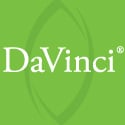
The connection between IGF-1—also known as the insulin-like growth factor 1—and the human growth hormone (HGH) for healthy aging is complex.
If excessive levels –low or high– of IGF-1 are present in the body, they could lead to some health problems. Additionally, HGH is generally considered to employ anti-insulin actions, whereas IGF-1 has insulin-like properties. Maintaining relatively low levels of IGF-1 and synergy between HGH and IGF-1 throughout most of one’s adult life is an important factor by which adults can live a healthy lifestyle and experience an optimal aging process.
Human Growth Hormone (HGH) and Insulin-like Growth Factor-1 (IGF-1) Play Essential Roles in Health
HGH and IGF-1 play essential roles in childhood growth and continue to serve important metabolic functions in adults. One of the conditions that may affect healthy aging includes low levels of growth hormone presenting in adults. This condition is mainly characterized by increased visceral adiposity, abnormal lipid profiles, decreased quality of life, and other important risk factors.1 Interestingly, HGH deficiency in adults predisposes insulin resistance.2 High doses of HGH treatment have major effects on lipolysis, which plays a crucial role in promoting its anti-insulin effects. On the other hand, IGF-1 acts as an insulin sensitizer that does not exert any direct effect on lipolysis or lipogenesis.3

The Role of HGH and IGF-1 in Metabolism and Aging
Research shows that one’s metabolism slows down with age. A few reasons for this include less physical activity (exercise), muscle loss (sarcopenia), and the normal aging of the organs. Additionally, loss in lean body mass and muscle tissue can be detrimental when it comes to ill adults. Yet HGH has major effects on metabolism. It has been shown that HGH’s potential benefits when it comes to protein metabolism.4 Some of the functions of HGH are facilitated through IGF-1. Administration of HGH induces a rise in circulating IGF-1 that stimulates glucose and amino acid uptake in muscle, which improves muscle protein synthesis.4 In catabolic circumstances, the levels of IGF-1 decrease while its binding proteins increase, leading to a lower local IGF-1 activity and contributing to the decreased insulin sensitivity seen in catabolism.5
The metabolic effects of HGH are, in part, mediated through IGF-1 produced in the liver and in the peripheral tissues influenced by HGH.5 In skeletal muscle, a reduced gene-expression of the HGH-receptor can occur. This reduces the local IGF-1 synthesis, an effect that may be offset by HGH supplementation.* Change in the GH/IGF-1 can possibly counteract through amino acid supplementation.*6,7,8,9 Specific amino acids—such as arginine, lysine, and ornithine—can stimulate HGH release when infused intravenously or administered orally. It has also been demonstrated that glycine is also one of the stimulatory agents inducing the pituitary gland to secrete HGH.8 These are all important amino acids utilized in the growth of HGH.
As specified above, a combination of HGH and IGF-1 has beneficial potential because the decreased insulin sensitivity induced by HGH can be outbalanced by the addition of IGF-1. In general, HGH increases the binding protein for IGF, and concomitant administration may, therefore, increase the bioavailability of IGF-1 and its effects on the tissues.2,6,7,8,9
Having Adequate Levels of IGF-1 is Extremely Important for the Elderly
Having low levels of IGF-1 in the elderly is linked to developmental changes. Adequate levels of IGF-1 are needed for the maintenance of bone mass, muscle mass, and brain function at later ages.9
In order to extend a patient’s lifespan, the goal should be to maintain a relatively low IGF-1 throughout most of their adult life. Then, once they reach the age of eighty, they should consume enough protein along with the amino acids arginine, lysine, ornithine, and glycine necessary to prevent their IGF-1 level from becoming excessively low.
It is also important to pay attention to their diet to ensure that their IGF-1 levels are favorable throughout their lives.
How IGF-1 works in the Human Body
As previously mentioned above, IGF-1 is a hormone with a similar structure to insulin as well as a cell growth-promoter important for brain development and muscle and bone growth during childhood. HGH from the pituitary gland stimulates IGF-1 production in the liver and IGF-1 levels peak during the teenage years and twenties, but those levels start to decline as one ages.10,11
The intake of protein and amino acids regulates IGF-1 circulating in the body. Animal protein has high levels of all the essential amino acids, thus it can trigger excessive body production of IGF-1, whereas plant protein does not.12,13 Still, if animal protein is not an option, there are other ways to consume these amino acids. Finally, high-glycemic, refined carbohydrates can also raise IGF-1.14
What are the Optimal IGF-1 Levels?
One study, conducted in Europe, found the following averages for IGF-1 levels in healthy patients of different age ranges:15
| Age |
21-30
|
31-40
|
41-50
|
51-60
|
61-70
|
71-80
|
80+
|
| Average Serum IGF-1 (ng/ml) |
158-230
|
135-220
|
121-193
|
98-150
|
85-140
|
85-95
|
85-90
|
The study reported an average serum IGF-1 level of 200-210 ng/ml, suggesting that this is the typical level for adults on a Western diet.16 The amount of animal products consumed by most Americans drives their IGF-1 into danger quantities (above 200), increasing their risk of other conditions.
Therefore, it is important to keep in mind that low IGF-1 levels also increase the risk of health complications, these levels being generally about 70-80 ng/ml or lower.12,13,14,17 Studies in elderly men (average age 75) have found an increased risk of cardiovascular problems in high IGF-1 groups (approximately 190 ng/ml).12,15,18,19,20,21
By taking all this information into account, most adults must keep IGF-1 below 175 ng/ml or even 150 ng/ml if possible. At the same time, serum IGF-1 levels below 80 ng/ml can be detrimental, especially after the age of 75.22,23
In essence, restricting the consumption of animal protein to maintain a relatively—but not excessively—low IGF-1 is an important objective for optimal aging. Since protein digestion and absorption can decline during the elderly years, adopting a more nutritional diet and lifestyle may be helpful for protein tolerability while aging, along with preventing the excessive lowering of IGF-1 commonly seen with other plant-based diets. To achieve greater micronutrient completeness, patients can add important amino acids like arginine, lysine, ornithine, and glycine, along with other sources of protein to their diets.
*These statements have not been evaluated by the Food and Drug Administration. This product is not intended to diagnose, treat, cure or prevent any disease.

Sources:
1 “Postoperative protein sparing.” National Center for Biotechnology Information. Accessed 22 Jun. 2019. https://www.ncbi.nlm.nih.gov/pubmed/10227922
2 “Metabolic effects of recombinant human growth hormone: isotopic studies in the postabsorptive state and during total parenteral nutrition.” National Center for Biotechnology Information. Accessed 21 Jun. 2019. https://www.ncbi.nlm.nih.gov/pubmed/2116934
3 “Low-dose growth hormone and hypocaloric nutrition attenuate the protein-catabolic response after major operation.” National Center for Biotechnology Information. Accessed 21 Jun. 2019. https://www.ncbi.nlm.nih.gov/pmc/articles/PMC1357936/
4 Adult growth hormone deficiency treatment with a combination of growth hormone and insulin-like growthfactor-1 resulting in elevated sustainable insulin-like growth factor binding protein 3 plasma levels.” National Center for Biotechnology Information. Accessed 24 Jun. 2019. https://www.ncbi.nlm.nih.gov/pubmed/20843352
5 “Recombinant human growth hormone accelerates wound healing in children with large cutaneous burns.” Semantic Scholar. Accessed 21 Jun. 2019. https://www.semanticscholar.org/paper/Recombinant-human-growth-hormone-accelerates-wound-Gilpin-Barrow/e12edb03629b94cca1d8522976f4b4555ed05268
6 “Insulin-like growth factor I exerts growth hormone- and insulin-like actions on human muscle protein metabolism.” Physiology.org. Accessed 21 Jun. 2019. https://www.physiology.org/doi/abs/10.1152/ajpendo.1994.267.2.E331?journalCode=ajpendo
7 “Use of amino acids as growth hormone-releasing agents by athletes.” National Center for Biotechnology Information. Accessed 23 Jun. 2019. https://www.ncbi.nlm.nih.gov/pubmed/12093449
8 “Stimulatory effect of glycine on human growth hormone secretion.” National Center for Biotechnology Information. Accessed 23 Jun. 2019. https://www.ncbi.nlm.nih.gov/pubmed/622050
9 “Use of a leucine clamp to demonstrate that IGF-I actively stimulates protein synthesis in normal humans.” Physiology.org. Accessed 22 Jun. 2019. https://physiology.org/doi/abs/10.1152/ajpendo.1994.267.4.E591
10 "Insulin-like growth factor 1 - Wikipedia." https://en.wikipedia.org/wiki/Insulin-like_growth_factor_1. Accessed 29 Jul. 2019.
11 "Insulin-Like Growth Factor-1 at Diagnosis and during ... - Hindawi." 18 Dec. 2017, https://www.hindawi.com/journals/jdr/2018/8623560/. Accessed 29 Jul. 2019.
12 “A paradoxical gender dissociation within the growth hormone/insulin-like growth factor I axis during protracted critical illness.” Oxford Academic. Accessed 22 Jun. 2019. https://academic.oup.com/jcem/article/85/1/183/2852923
13 “Reactivation of pituitary hormone release and metabolic improvement by infusion of growth hormone-releasing peptide and thyrotropin-releasing hormone in patients with protracted critical illness.” ResearchGate. Accessed 23 Jun. 2019.https://www.researchgate.net/publication/13097995_Reactivation_of_Pituitary_Hormone_Release_and_Metabolic_Improvement_by_Infusion_of_Growth_Hormone-Releasing_Peptide_and_Thyrotropin-Releasing_Hormone_in_Patients_with_Protracted_Critical_Illness_1
14 “Postoperative induction of insulin-like growth factor binding protein-3 proteolytic activity: relation to insulin and insulin sensitivity.” National Center for Biotechnology Information. Accessed 23 Jun. 2019. https://www.ncbi.nlm.nih.gov/pubmed/9661636
15 “Reference ranges for serum insulin-like growth factor I (IGF-I) in healthy Chinese adults.” National Center for Biotechnology Information. Accessed 23 Jun. 2019. https://www.ncbi.nlm.nih.gov/pmc/articles/PMC5627923/
16 “The association between diet and serum concentrations of IGF-I, IGFBP-1, IGFBP-2, and IGFBP-3 in the European Prospective Investigation into Cancer and Nutrition.” American Association for Cancer Research. Accessed 23 Jun. 2019. http://cebp.aacrjournals.org/content/18/5/1333
17 “Relation between growth hormone and somatomedin.” ResearchGate. Accessed 24 Jun. 2019. https://www.researchgate.net/publication/22967308_Relation_Between_Growth_Hormone_and_Somatomedin
18 “Physiology of insulin-like growth factor-1.” UptoDate. Accessed 24 Jun. 2019. https://www.uptodate.com/contents/physiology-of-insulin-like-growth-factor-1
19 “Regulation of insulin-like growth factor 1 gene expression in skeletal muscle.” ResearchGate. Accessed 24 Jun. 2019. https://www.researchgate.net/publication/21814755_Regulation_of_insulin-like_growth_factor_1_gene_expression_in_skeletal_muscle
20 “Measurement of human growth hormone receptor messenger ribonucleic acid by a quantitative polymerase chain reaction-based assay: demonstration of reduced expression after elective surgery.” National Center for Biotechnology Information. Accessed 24 Jun. 2019. https://www.ncbi.nlm.nih.gov/pubmed/9024230
21 “Growth hormone treatment prevents the decrease in insulin-like growth factor I gene expression in patients undergoing abdominal surgery.” National Center for Biotechnology Information. Accessed 24 Jun. 2019. https://www.ncbi.nlm.nih.gov/pubmed/9589657
22 “Levels of GH binding activity, IGFBP-1, insulin, blood glucose and cortisol in intensive care patients.” National Center for Biotechnology Information. Accessed 24 Jun. 2019. https://www.ncbi.nlm.nih.gov/pubmed/1721565
23 “Insulinlike growth factor 1 production is inhibited in human sepsis.” National Center for Biotechnology Information. Accessed 24 Jun. 2019. https://www.ncbi.nlm.nih.gov/pubmed/3178489












.jpg)
.jpg)




